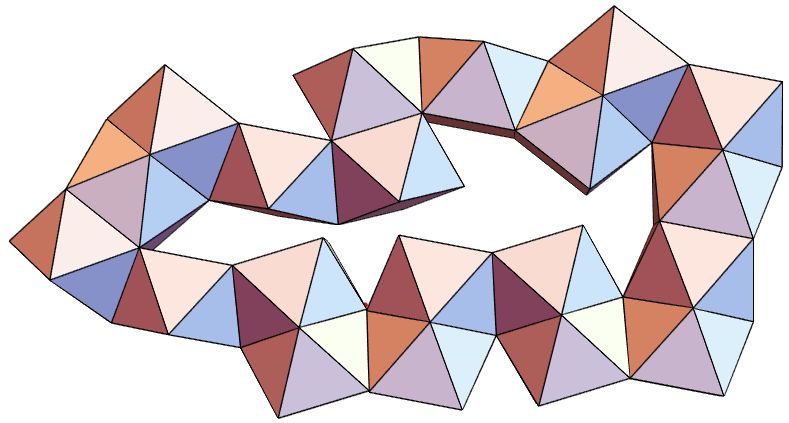Quite a few have asked ... "So how close is this?"
First, a slightly simpler antiprism:
root = Root[-1 + 2 #^4& , 2, 0];
v = {{1, -1, -root}, {-1, -1, -root}, {-1, 1, -root}, {1,
1, -root}, {Sqrt[2], 0, root}, {0, Sqrt[2], root}, {-Sqrt[2], 0,
root}, {0, -Sqrt[2], root}};
f = {{1, 2, 3, 4}, {5, 6, 7, 8}, {1, 8, 2}, {2, 7, 3}, {3, 6, 4}, {4,
5, 1}, {1, 5, 8}, {2, 8, 7}, {3, 7, 6}, {4, 6, 5}};
a4 = Polyhedron[v, f];
Next, a new function, PolyhedronFaceReflect, that refects the polyhedron on a given face:
PolyhedronFaceReflect[poly_, face_] :=
Module[{v = poly[[1]], f = poly[[2]]},
Polyhedron[
RootReduce[
ResourceFunction["ReflectPoints"][v[[Take[f[[face]], 3]]], v]],
f]]
With that, we can reflect on the faces and see the gap when the polyhedron is reflected precisely. A red sphere has been added to draw attention to the gap area.
dat = FoldList[PolyhedronFaceReflect,
a4, {3, 5, 3, 5, 3, 5, 3, 5, 3, 5, 3, 5}];
Graphics3D[{{Red, Sphere[v[[6]] + {0, 0, .1}, .05]}, dat},
Boxed -> False]

How far apart are the points in the gap triangles, for length 2 edges? 0.0268171 or 0.0189626
N[EuclideanDistance[dat[[1, 1, 6]], dat[[13, 1, 8]]]]
N[EuclideanDistance[dat[[1, 1, 3]], dat[[13, 1, 2]]]]
The gap is small enough that it's hard to draw attention to it.
Here's a more twisted ring with a gap of 0.0330049:
dat = FoldList[PolyhedronFaceReflect, a4,{2,3,5,1,2,5,3,1,5,3,2,5,2,1,2,5,2,3,2}];
Graphics3D[{{Red,Sphere[v[[6]]+{0,0,.1},.05]},dat}, Boxed-> False]
N[EuclideanDistance[dat[[1, 1, 4]], dat[[20, 1, 4]]]]
